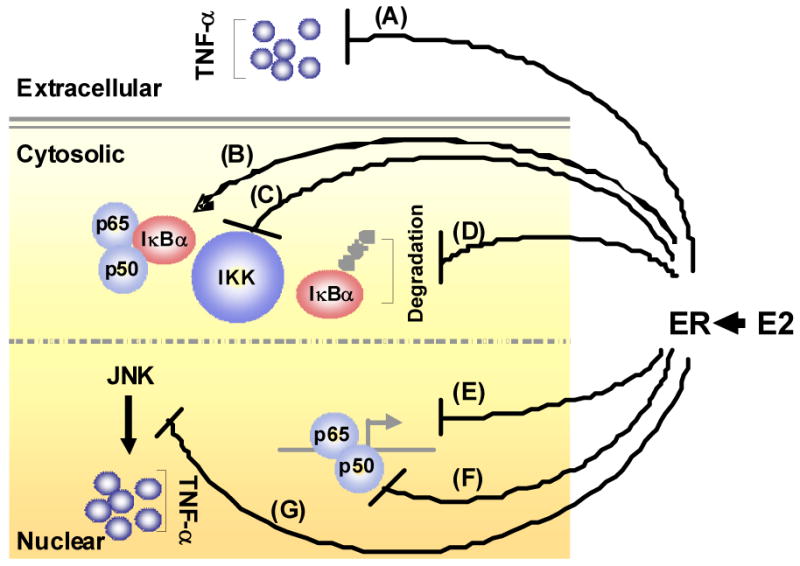Figure 2.

Mechanisms by which E2 treatment attenuates the pro-inflammatory (e.g. TNF-α)-stimulated IκBα/NFκB signaling pathway. E2 inhibits the expression of the pro-inflammatory mediator TNF-α (A) and increases the expression of IκBα (B). E2 can also inhibit IKK-mediated phosphorylation (C) and degradation (D) of IκBα. At the transcriptional level, E2-induced activation of estrogen receptor (ER) inhibits NFκB-induced transcription of chemokines/cytokines (E) and can inhibit the ability of NFκB to bind to DNA (F). E2 has also been shown to block JNK induced TNF-α production (G). ⊥- indicates inhibitory effects; ↑ - indicates stimulatory effects.
